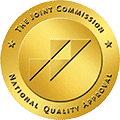Concerned ’bout substance abuse in your workplace? Read on! Get to know the trends and secure the health of your workers. Don’t skip the steps to prevent substance abuse at work. It’s important!
Substance abuse in the workplace is still a thing. Alarmingly, there are rising trends of it. Substance abuse is when drugs and alcohol–including prescription drugs–are misused or overused. It has huge, bad impacts on both employees and employers. To handle the issue, employers need to know what’s going on.
Research says that substance abuse affects workplace productivity and increases absenteeism and accidents. Employers are taking steps to stop addiction. They use programs like:
Keeping up with the trends and taking proactive measures helps ensure a healthy and productive workplace.
To fully understand the impact of substance abuse in the workplace, it’s important to first define what we mean by substance abuse. This section will provide a clear definition of substance abuse and its various forms in the workplace. We’ll also explore the different types of substances that are commonly abused in the workplace and their effects on employees’ health and work performance. Additionally, we’ll discuss the signs and symptoms of substance abuse, so employers can identify and address these issues before they become a bigger problem.
Substance abuse has become an issue in the workplace. It refers to the harmful use of drugs or alcohol, causing physical, mental and social issues. Here are some facts about the most commonly abused substances in the workplace:
Substance abuse in the workplace is a serious issue. To fight it, employee education programs, drug testing and a drug-free workplace should be promoted.
Substance abuse is the usage of harmful drugs or alcohol which leads to physical, emotional, and social issues. Acknowledging the signs and symptoms of substance abuse can help people get treatment and assistance to beat this addiction.
Here are some common signs and symptoms of substance abuse to be aware of:
Substance abuse affects performance, safety, and worker well-being in the workplace. Early intervention, preventive measures, and treatment aid can enhance outcomes for individuals and companies. Encouraging a drug-free workplace policy can also help to minimize the danger of substance abuse-related events.
The prevalence of substance abuse in the workplace is a growing concern, impacting not only the individuals struggling with addiction but also their colleagues, company culture, and bottom line.
To understand the scope of this issue, we’ll examine the latest statistics on substance abuse in the workplace in the first sub-section. From there, we’ll explore the various factors that contribute to substance abuse in the workplace, shedding light on what can be done to prevent this issue from escalating further.
Understanding the extent of this issue and its underlying causes is crucial in creating a healthier and safer workplace environment.
Substance abuse is growing in the workplace. It affects many people and harms work performance, tardiness, absenteeism, and costs employers. It varies with age, gender, and occupation. Here are some important stats:
Employers can use this info to make better prevention and intervention programs. Early help can make a big difference in long-term recovery.
Substance abuse in the workplace has many possible causes. Stress and job dissatisfaction may be motivating factors. A workplace culture that accepts substance abuse can worsen the issue. Furthermore, access to drugs and alcohol, particularly in industries like hospitality, can increase the rate of substance abuse.
Employers can recognize these factors and create an environment that helps employees get help when necessary.
Substance abuse is a significant issue that impacts not just individuals, but entire organizations as well. In this section, we will explore the impact of substance abuse on the workplace, including its effects on employee performance and productivity and workplace safety. We will delve into the key statistics and trends surrounding substance abuse in the workplace and discuss the implications of these trends for both employers and employees. By the end of this section, readers will gain a better understanding of the real-world consequences of substance abuse on workplaces and the steps that can be taken to address this critical issue.
A study reveals that substance abuse has majorly bad outcomes on employee performance and productivity. It hurts the work environment.
Employees who misuse drugs or alcohol may experience:
Substance abuse can dent the company’s reputation, add healthcare costs, lower morale, and decrease productivity. To prevent such a situation, employers should:
It is essential to be watchful and boost workplace wellness, which has a favorable effect on company culture.
Substance abuse has serious repercussions for both employers and employees in the workplace. It can result in accidents, injuries, absenteeism, and decreased productivity, as well as increased healthcare costs.
Studies have demonstrated that substance abuse affects cognitive functioning, coordination, and judgment, increasing the danger of accidents, and even fatalities in the workplace. Those struggling with substance abuse may miss work, arrive late, or leave early, affecting morale and productivity. This can also affect an employee’s ability to concentrate and fulfill their job duties, which leads to poor work quality.
Substance abuse-related health issues can be costly for employers and employees alike. To prevent and tackle substance abuse, employers can:
In recent years, addressing substance abuse in the workplace has become increasingly important. As a result, numerous employer initiatives and employee assistance programs (EAPs) have been developed to help combat this issue.
This section will examine the current trends in addressing substance abuse in the workplace, with a focus on two key areas:
We’ll also highlight the impact that the implementation of these programs and services has had on the workforce.
Employers are taking more steps to address substance abuse in the workplace lately. This shows the growing worry about how it impacts workers and their job environments. Such initiatives include:
A National Safety Council study found 75% of employers were affected by opioids in the workplace. Also, untreated substance abuse disorders cost employers roughly $81 billion each year in productivity loss and higher healthcare costs.
By being proactive, employers can create a safe work environment for everyone while cutting healthcare/insurance expenses.
Employee Assistance Programs (EAPs) are getting more popular as a way to deal with substance abuse in the workplace. EAPs provide a confidential resource for employees struggling with substance abuse, addiction, or other issues that can affect job performance.
Notable trends for addressing substance abuse in the workplace:
These practices have increased awareness of substance abuse in the workplace and a more proactive approach. This leads to a healthier and safer work environment for all employees.
Substance abuse is a major issue in workplaces. Reports show a rise in the rate of drug abuse among employees, leading to reduced productivity, accidents, and health problems. Companies are now adopting more extensive drug testing policies and rehab programs for affected workers.
Yet, there is still a need for more knowledge and education on substance abuse and mental health in the workplace. It is essential for employers to promote a supportive and non-judgmental work environment. This encourages employees to seek help when needed.
Addiction and substance abuse are complex matters needing a multifaceted approach to be tackled. By looking out for the well-being of their employees, workplaces can create a healthier and safer environment for all.
Get confidential help 24/7. Call now for:
Related Articles
Get Help Now
Medical Advice Disclaimer
Magnified Health Systems aims to improve the quality of life for people struggling with substance use or mental health disorder with fact-based content about the nature of behavioral health conditions, treatment options and their related outcomes. We publish material that is researched, cited, edited and reviewed by licensed medical professionals. The information we provide is not intended to be a substitute for professional medical advice, diagnosis or treatment. It should not be used in place of the advice of your physician or other qualified healthcare providers.

Dr. Bickley graduated from U.C. Irvine with honors: Phi Beta Kappa, Golden Key International Honor Society, Cum Laude. He has been featured on national radio and print media. He is also a frequent lecturer at National Conferences. He holds an A.S. degree in Drug & Alcohol Studies, and two B.A. degrees in Criminology & Psychology, and masters and doctoral degree in Clinical Psychology. He is a licensed California Drug & Alcohol Counselor Level II, a licensed Clinical Supervisor and is certified in treating Eating Disorders.
Call Us Now, Our Admissions Team Is Standing By And Available 24/7.

Head Office Location:
1530 N Federal Hwy Lake Worth, FL 33460
Contact & Feedback:

We are here for you.
We are here for you, Call us and get started!
